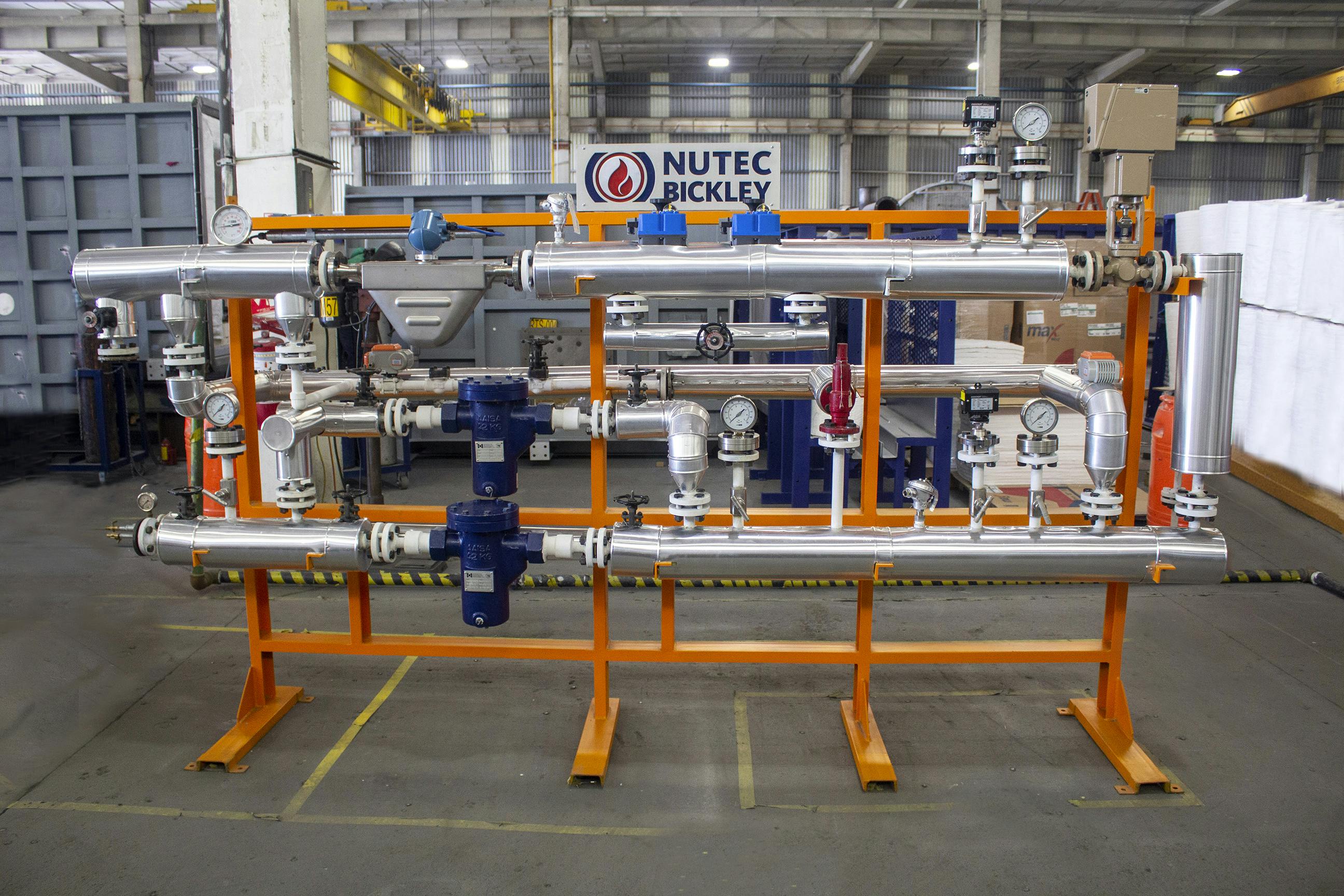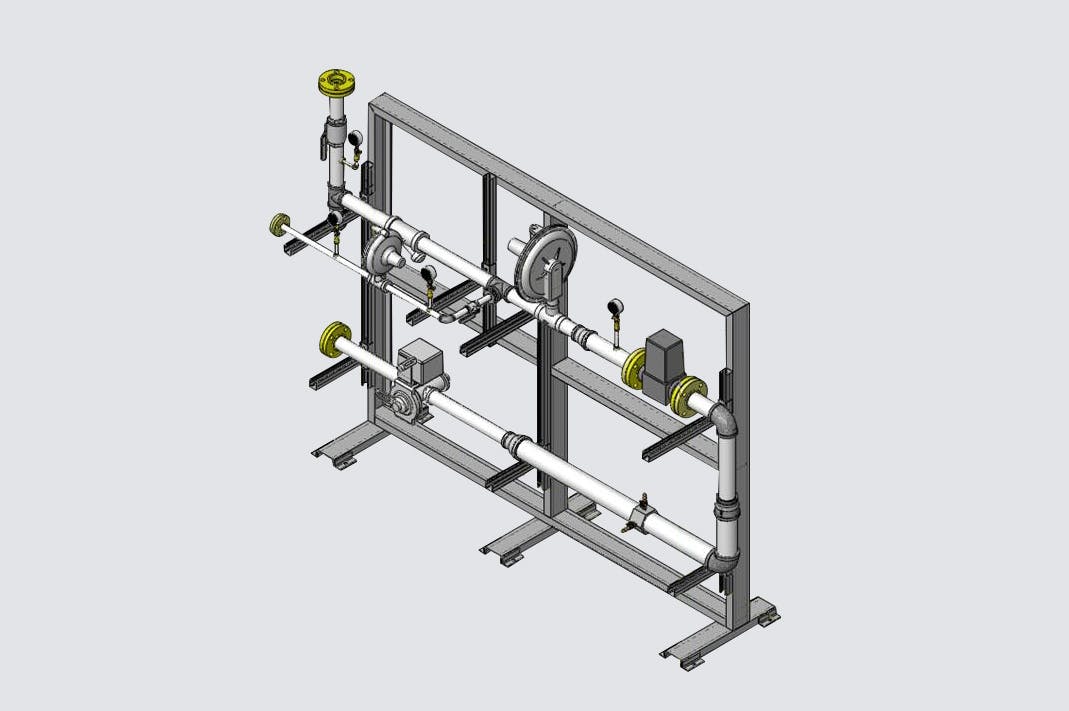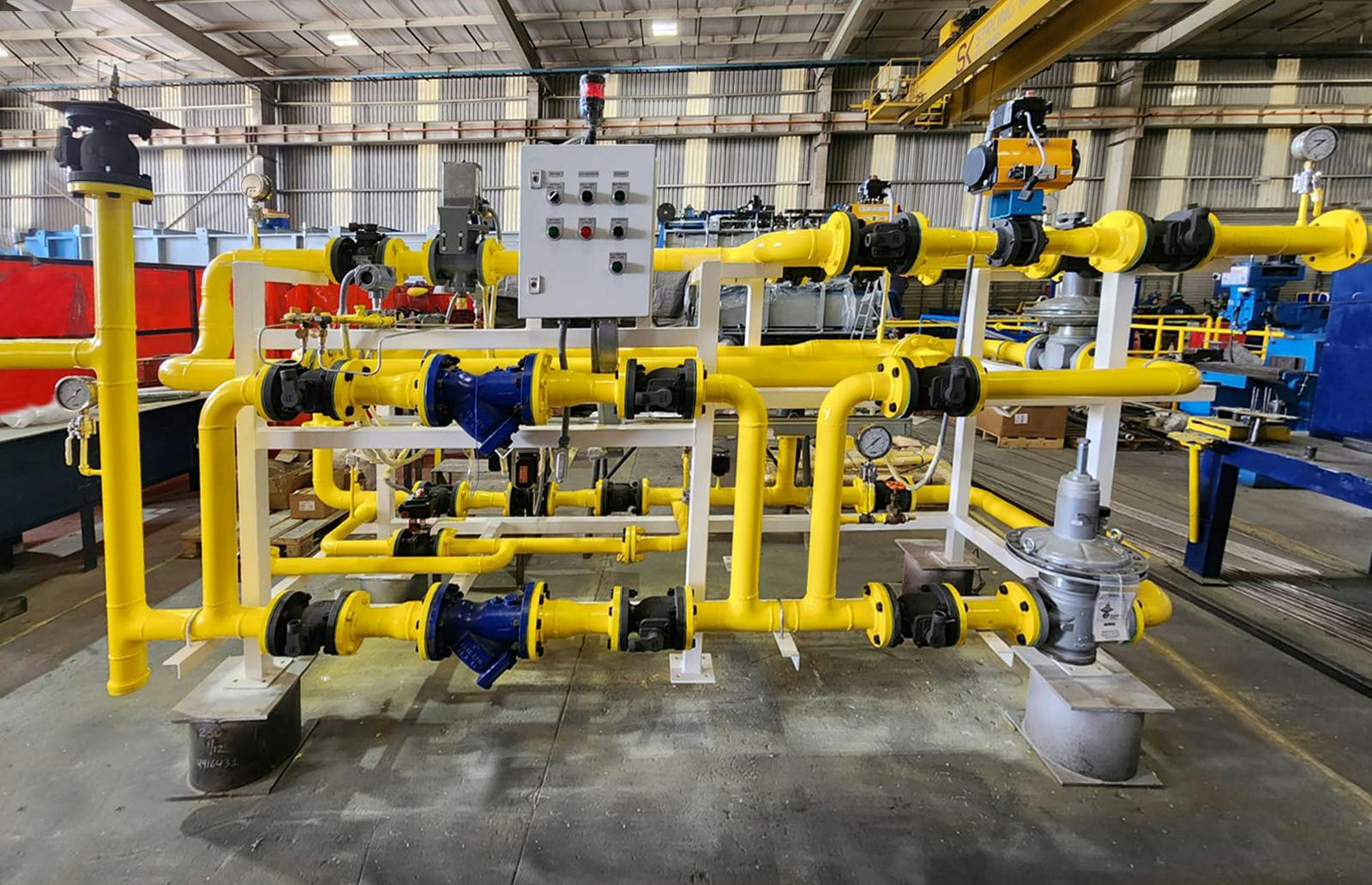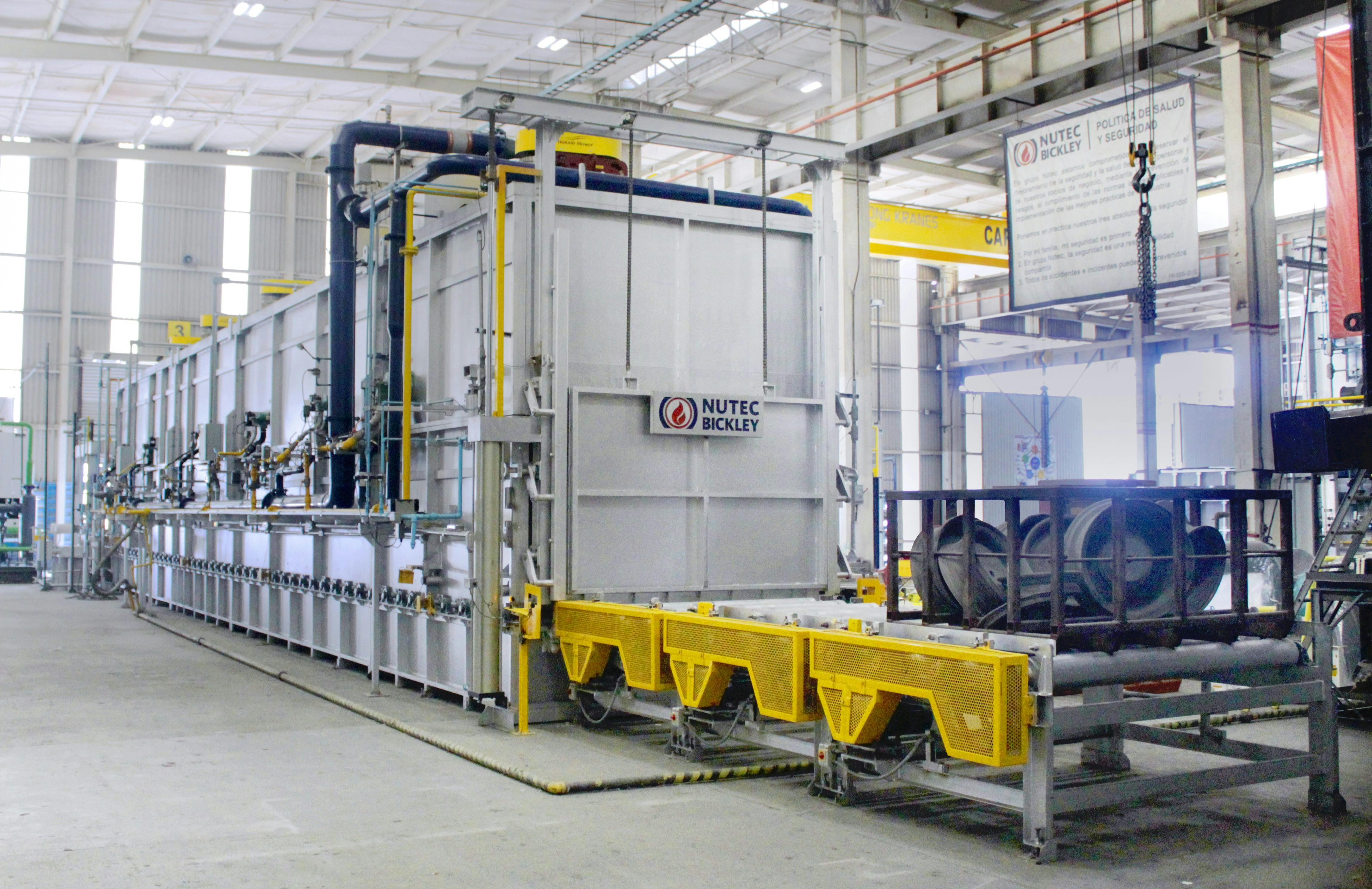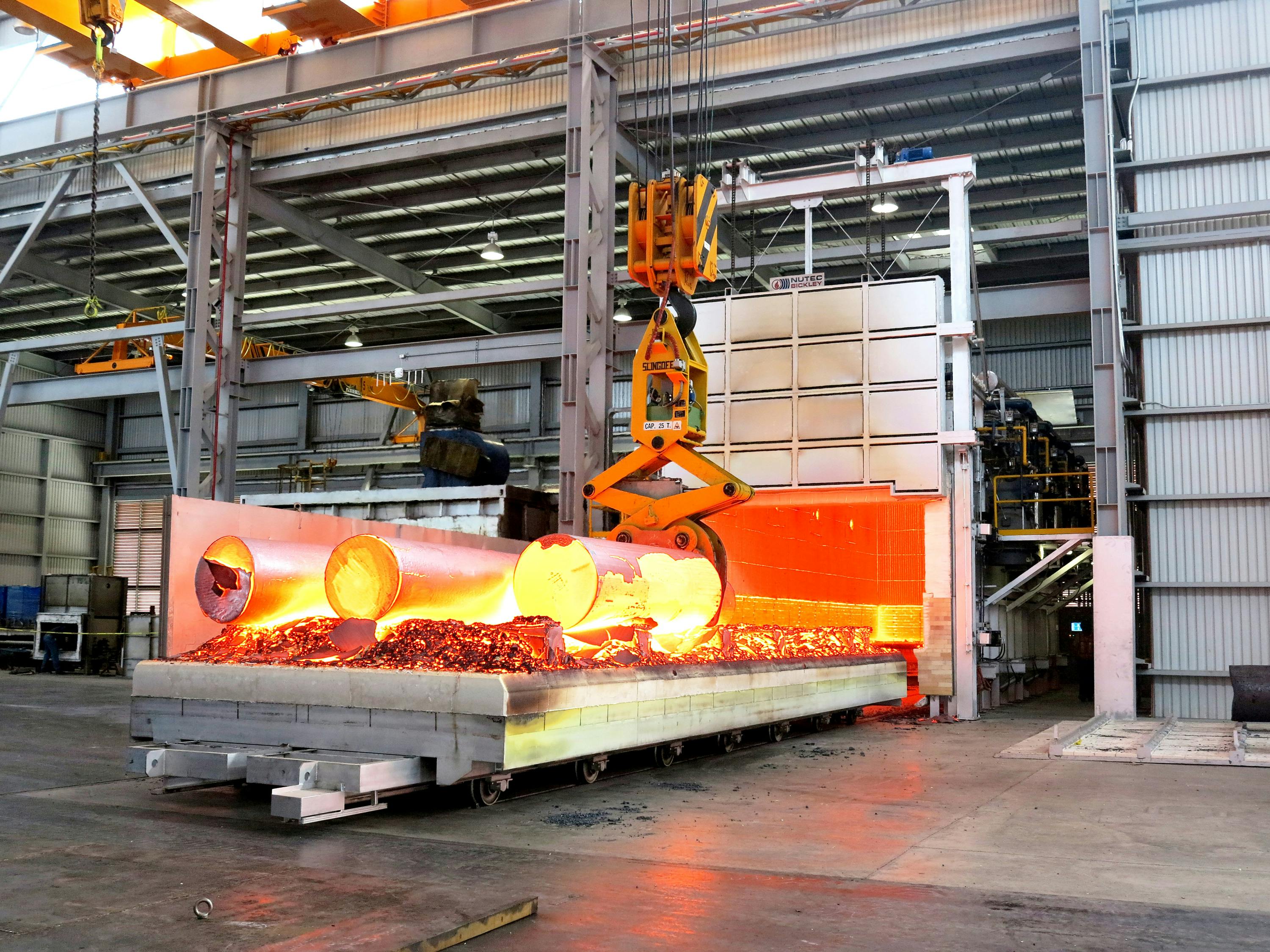NUTEC Bickley has a long history of providing innovative solutions for industrial applications, including designing, fabricating, and maintaining industrial furnaces and kilns. A critical component of these systems, specifically using gaseous fuels is the gas train, playing a vital role in ensuring efficient and safe operation.
This article delves into the world of gas trains, exploring their components, design considerations based on NFPA 86 standards for gas-fired equipment, and the overall impact on furnace and kiln performance.
What is a fuel train (gas train)?
A gas train is a system that precisely regulates gaseous fuel delivery to an industrial burner. It acts as the bridge between the gas source (natural gas pipeline or storage tank) and the combustion process, ensuring a consistent flow of fuel at the required pressure and flow rate. A well-designed gas train system offers numerous benefits, including:
- Improved Efficiency: Precise gas metering allows for optimal combustion, minimizing wasted fuel and maximizing heat output.
- Reduced Emissions: Efficient combustion leads to cleaner burning and lower emissions, contributing to a more sustainable operation.
- Enhanced Safety: Safety features integrated into the gas train system help mitigate risks associated with gas leaks and pressure fluctuations.
Discover how our fuel train solutions can transform your efficiency and safety.
Understanding the components of a gas train (NFPA 86 standards considered)
A gas train system is comprised of several key components, each playing a specific role according to NFPA 86 standards for gas-fired equipment:
- Gas Shut-Off Valve: Located at the beginning of the gas train, this manual valve allows for complete isolation of the gas supply for maintenance or in response to emergencies.
- Gas Filter: This component removes debris or contaminants from the stream, protecting downstream equipment.
- Pressure Regulator: The pressure regulator reduces the incoming gas pressure from the main supply to the pressure required by the burner for efficient combustion.
- Gas Safety Shut-Off Valve: This automatic safety valve shuts off the gas supply in case of a pressure drop or other safety concerns.
- Low/High Pressure Switch: Both switches are interlocked into the combustion safety circuitry. The settings are made in accordance with the operating limits of the burner system.
- Gas Meter (Optional): This device measures the volume of gas consumed, allowing for monitoring and optimizing fuel usage.
- Pilot Gas Train (Optional for specific burner applications): Some burner systems may require a separate gas train specifically for the pilot flame ignition. This train would include a shut-off valve, regulator, and safety shut-off valve sized for the pilot burner requirements.
- Burner: The burner is where the gas and air mix for combustion. The design and configuration of the burner play a crucial role in achieving efficient and complete combustion of the fuel.
